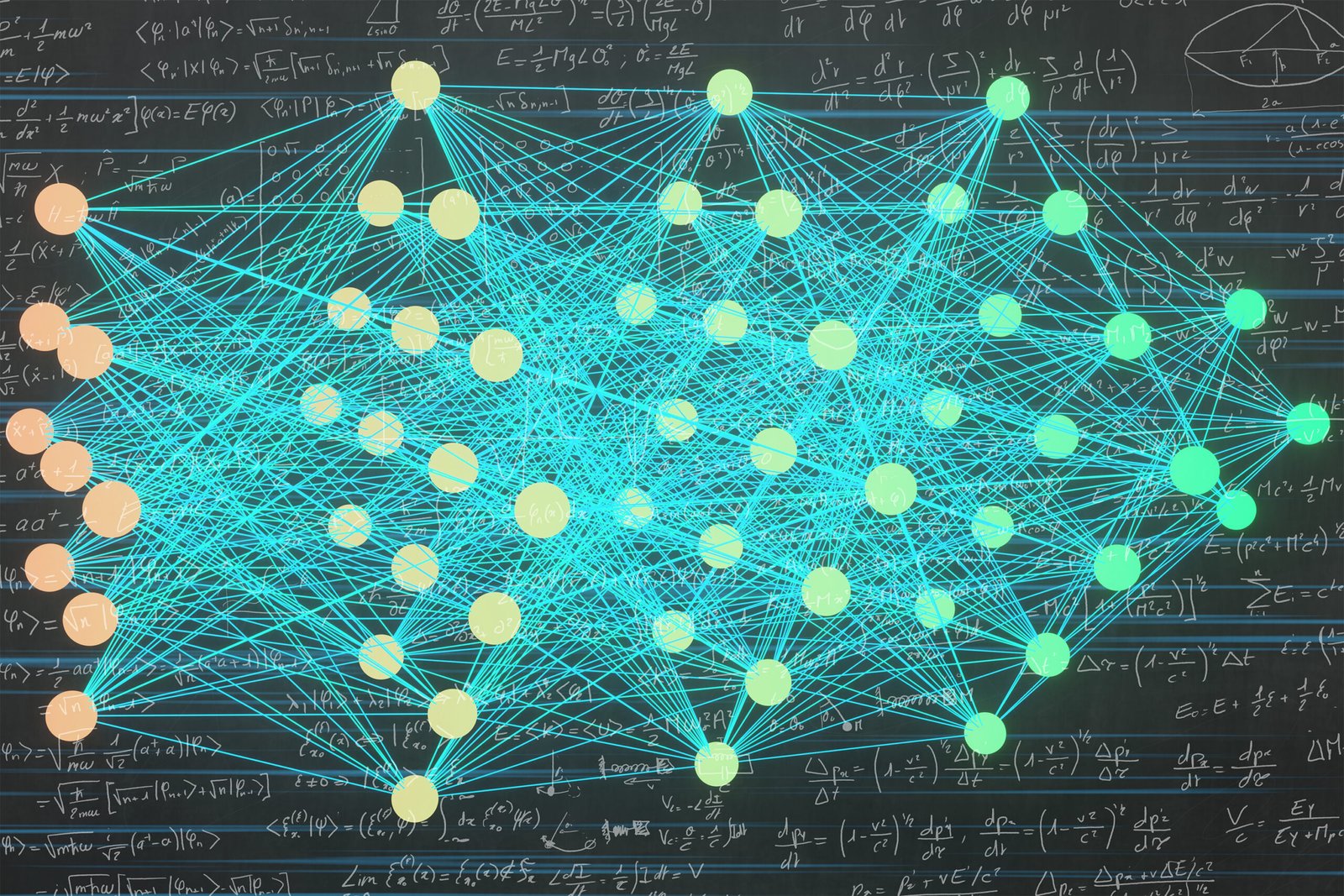Brand Stories
New algorithms enable efficient machine learning with symmetric data | MIT News

If you rotate an image of a molecular structure, a human can tell the rotated image is still the same molecule, but a machine-learning model might think it is a new data point. In computer science parlance, the molecule is “symmetric,” meaning the fundamental structure of that molecule remains the same if it undergoes certain transformations, like rotation.
If a drug discovery model doesn’t understand symmetry, it could make inaccurate predictions about molecular properties. But despite some empirical successes, it’s been unclear whether there is a computationally efficient method to train a good model that is guaranteed to respect symmetry.
A new study by MIT researchers answers this question, and shows the first method for machine learning with symmetry that is provably efficient in terms of both the amount of computation and data needed.
These results clarify a foundational question, and they could aid researchers in the development of more powerful machine-learning models that are designed to handle symmetry. Such models would be useful in a variety of applications, from discovering new materials to identifying astronomical anomalies to unraveling complex climate patterns.
“These symmetries are important because they are some sort of information that nature is telling us about the data, and we should take it into account in our machine-learning models. We’ve now shown that it is possible to do machine-learning with symmetric data in an efficient way,” says Behrooz Tahmasebi, an MIT graduate student and co-lead author of this study.
He is joined on the paper by co-lead author and MIT graduate student Ashkan Soleymani; Stefanie Jegelka, an associate professor of electrical engineering and computer science (EECS) and a member of the Institute for Data, Systems, and Society (IDSS) and the Computer Science and Artificial Intelligence Laboratory (CSAIL); and senior author Patrick Jaillet, the Dugald C. Jackson Professor of Electrical Engineering and Computer Science and a principal investigator in the Laboratory for Information and Decision Systems (LIDS). The research was recently presented at the International Conference on Machine Learning.
Studying symmetry
Symmetric data appear in many domains, especially the natural sciences and physics. A model that recognizes symmetries is able to identify an object, like a car, no matter where that object is placed in an image, for example.
Unless a machine-learning model is designed to handle symmetry, it could be less accurate and prone to failure when faced with new symmetric data in real-world situations. On the flip side, models that take advantage of symmetry could be faster and require fewer data for training.
But training a model to process symmetric data is no easy task.
One common approach is called data augmentation, where researchers transform each symmetric data point into multiple data points to help the model generalize better to new data. For instance, one could rotate a molecular structure many times to produce new training data, but if researchers want the model to be guaranteed to respect symmetry, this can be computationally prohibitive.
An alternative approach is to encode symmetry into the model’s architecture. A well-known example of this is a graph neural network (GNN), which inherently handles symmetric data because of how it is designed.
“Graph neural networks are fast and efficient, and they take care of symmetry quite well, but nobody really knows what these models are learning or why they work. Understanding GNNs is a main motivation of our work, so we started with a theoretical evaluation of what happens when data are symmetric,” Tahmasebi says.
They explored the statistical-computational tradeoff in machine learning with symmetric data. This tradeoff means methods that require fewer data can be more computationally expensive, so researchers need to find the right balance.
Building on this theoretical evaluation, the researchers designed an efficient algorithm for machine learning with symmetric data.
Mathematical combinations
To do this, they borrowed ideas from algebra to shrink and simplify the problem. Then, they reformulated the problem using ideas from geometry that effectively capture symmetry.
Finally, they combined the algebra and the geometry into an optimization problem that can be solved efficiently, resulting in their new algorithm.
“Most of the theory and applications were focusing on either algebra or geometry. Here we just combined them,” Tahmasebi says.
The algorithm requires fewer data samples for training than classical approaches, which would improve a model’s accuracy and ability to adapt to new applications.
By proving that scientists can develop efficient algorithms for machine learning with symmetry, and demonstrating how it can be done, these results could lead to the development of new neural network architectures that could be more accurate and less resource-intensive than current models.
Scientists could also use this analysis as a starting point to examine the inner workings of GNNs, and how their operations differ from the algorithm the MIT researchers developed.
“Once we know that better, we can design more interpretable, more robust, and more efficient neural network architectures,” adds Soleymani.
This research is funded, in part, by the National Research Foundation of Singapore, DSO National Laboratories of Singapore, the U.S. Office of Naval Research, the U.S. National Science Foundation, and an Alexander von Humboldt Professorship.
Brand Stories
Cohen & Steers tips power demand from data centres to cope with the artificial intelligence boom

Utilities are among the top picks for international investment group Cohen & Steers as it reshuffles its holdings to minimise the impact of global tariffs and bets on rising demand for power from data centres to cope with the artificial intelligence boom.
“Utilities tend to have very little impact from tariffs,” said Ben Morton, the New York-based head of global infrastructure for the $US88 billion ($136 billion) asset manager during a trip to Sydney to meet with local investors.
Loading…
Brand Stories
Fashion Brands and Hotels Team Up for the Hottest Travel Collaborations of Summer 2025 – L'OFFICIEL USA
Brand Stories
How to create passive income in 2025 with AI

Artificial intelligence is no longer a futuristic concept; it’s a powerful tool that can be leveraged today to build scalable and sustainable passive income streams. In 2025, with AI becoming more accessible and sophisticated, the opportunities for automation and monetization are more significant than ever. Here’s a detailed guide on how to create passive income using AI.
1. AI-Powered Content Creation and Monetization
Content creation is one of the most accessible and effective ways to generate passive income with AI. The key is to use AI to handle the heavy lifting of production, allowing you to focus on strategy and quality control.
Blogging and SEO:
Automated Content Generation: Use AI writing tools like Jasper, Copy.ai, or a custom GPT to generate blog posts, articles, and guides on a massive scale. You can feed the AI a topic and a few keywords, and it can produce a well-structured draft in minutes.
SEO Optimization:AI tools can also help with keyword research, meta descriptions, and on-page SEO. This ensures your content is not only abundant but also optimized to rank highly on search engines, driving organic traffic and passive ad or affiliate revenue.
Affiliate Marketing:Integrate affiliate links into your AI-generated content. Once the blog post is live and attracting readers, it can generate commissions from product sales with no further effort from you.
Faceless YouTube Channels:
Scripting and Video Production: AI can write engaging scripts for videos in a specific niche (e.g., finance, history, or self-improvement).
Voiceovers and Visuals:Use AI-powered text-to-speech generators like ElevenLabs for professional-sounding voiceovers. Combine this with AI video generators or stock footage to create compelling videos without ever showing your face or recording a single line of dialogue.
Monetization: Once your channel is established, you can earn passive income through YouTube’s Partner Program (ad revenue) and by including affiliate links in your video descriptions.
Selling AI-Generated Digital Products:
E-books and Planners: Use AI to write e-books on niche topics, or create unique digital planners and journals. You can then sell these products on platforms like Etsy or Gumroad.
Print-on-Demand (POD): AI image generators like Midjourney or DALL-E can produce stunning and unique art. You can use these designs on t-shirts, mugs, and posters and sell them through POD services like Printful or Printify. The platform handles production and shipping, making it a completely passive income stream after the initial design and setup.
2. AI-Driven E-commerce and Dropshipping
AI can automate and optimize every step of an e-commerce business, from product selection to marketing.
Dropshipping with AI: AI tools can analyze market trends to help you identify winning products to sell. They can also generate product descriptions and marketing copy, and even automate ad campaigns on platforms like Facebook and Instagram.
Automated E-commerce Stores: Platforms like Shopify offer AI-powered store builders that can get you up and running in a day. You can use AI to manage inventory, forecast demand, and provide personalized product recommendations to customers, all of which contribute to a more passive operation.
3. AI-Powered Services and Automation for Businesses
You can sell AI-powered solutions to other businesses, creating a recurring revenue model.
Building Custom Chatbots:Many small to medium-sized businesses need chatbots for their websites to handle customer inquiries, book appointments, or qualify leads. You can use no-code AI tools to build and deploy these chatbots and charge businesses a monthly fee for the service and maintenance.
AI-Powered Social Media Management: Offer a subscription-based service where AI tools generate and schedule social media content for clients. The AI can analyze their target audience and industry trends to create relevant and engaging posts, all with minimal input from you once the system is configured.
AI Consulting and Workflow Automation: As more businesses adopt AI, they’ll need help integrating it into their workflows. You can offer consulting services to help companies identify opportunities for AI integration, build custom automation workflows using tools like Zapier or Make, and charge a premium for your expertise.
4. Leveraging AI for Financial Strategies
AI can also be applied to financial markets to generate passive income.
Algorithmic Trading: While this requires a higher level of expertise, AI and machine learning are used to develop trading bots that can analyze market data and execute trades automatically. These bots can be configured to operate based on your specific risk tolerance and investment goals.
Predictive Analytics for Investment: Use AI to analyze market trends and predict potential growth areas. While this isn’t a direct income stream, it can guide your investment decisions and lead to significant passive returns over time.
The key to creating passive income with AI in 2025 is to see AI as a powerful partner that handles repetitive, time-consuming tasks. By building a system where AI does the work, you can create and manage income streams that require very little active involvement, ultimately freeing up your time and generating wealth.
-

 Brand Stories2 weeks ago
Brand Stories2 weeks agoBloom Hotels: A Modern Vision of Hospitality Redefining Travel
-

 Brand Stories1 week ago
Brand Stories1 week agoCheQin.ai sets a new standard for hotel booking with its AI capabilities: empowering travellers to bargain, choose the best, and book with clarity.
-

 Destinations & Things To Do2 weeks ago
Destinations & Things To Do2 weeks agoUntouched Destinations: Stunning Hidden Gems You Must Visit
-

 Destinations & Things To Do1 week ago
Destinations & Things To Do1 week agoThis Hidden Beach in India Glows at Night-But Only in One Secret Season
-

 AI in Travel2 weeks ago
AI in Travel2 weeks agoAI Travel Revolution: Must-Have Guide to the Best Experience
-

 Brand Stories4 weeks ago
Brand Stories4 weeks agoVoice AI Startup ElevenLabs Plans to Add Hubs Around the World
-

 Brand Stories3 weeks ago
Brand Stories3 weeks agoHow Elon Musk’s rogue Grok chatbot became a cautionary AI tale
-

 Asia Travel Pulse4 weeks ago
Asia Travel Pulse4 weeks agoLooking For Adventure In Asia? Here Are 7 Epic Destinations You Need To Experience At Least Once – Zee News
-

 AI in Travel4 weeks ago
AI in Travel4 weeks ago‘Will AI take my job?’ A trip to a Beijing fortune-telling bar to see what lies ahead | China
-

 Brand Stories4 weeks ago
Brand Stories4 weeks agoChatGPT — the last of the great romantics


You must be logged in to post a comment Login